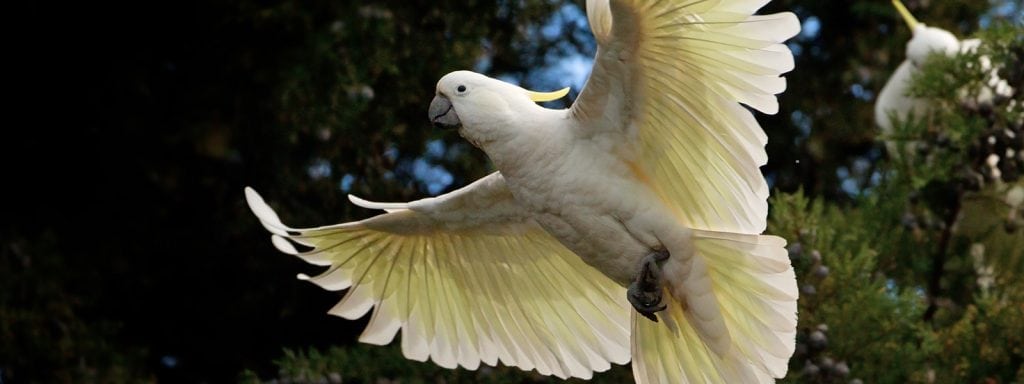Their plumage is generally less colorful than that of other parrots, being mainly white, grey or black and often with colored features in the crest, cheeks or tail. Cockatoos have a large bill, which is kept sharp by rasping the two mandibles together when resting. The bill is complemented by a large muscular tongue which helps manipulate seeds inside the bill so that they can be de-husked before eating.
Cockatoos, depending on the species will eat an assortment of seeds, fruits, nuts, berries, blossoms, roots, and vegetation such as leaf buds. Some cockatoos even eat insects and their larva. They are known to raid farmers’ crops, destroy sprouts, mature crops and bagged grain. Cockatoos are diurnal and require daylight to find their food.

The vocalisations of cockatoos are loud and harsh. They serve a number of functions, including allowing individuals to recognize one another, alerting others of predators, indicating individual moods, maintaining the cohesion of a flock and as warnings when defending nests.
Cockatoos are monogamous, mating for life. They mate once a year, between December and March. The male cockatoo puts on an elaborate show to attract a female. He opens his wings, spreads his tail, ruffles his feathers and raises his crest while bobbing, bouncing and dancing in front of the female. After the female accepts the male’s advances, the pair will preen each other.















